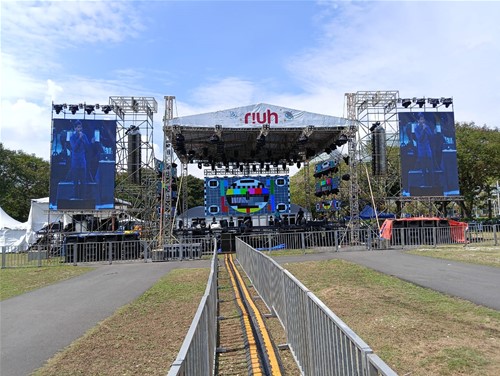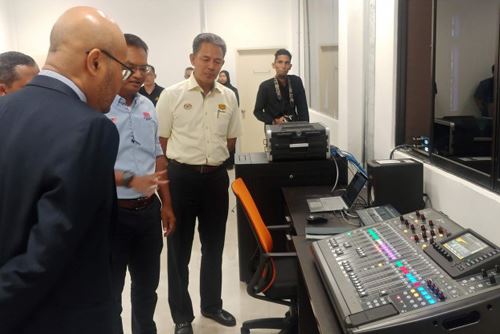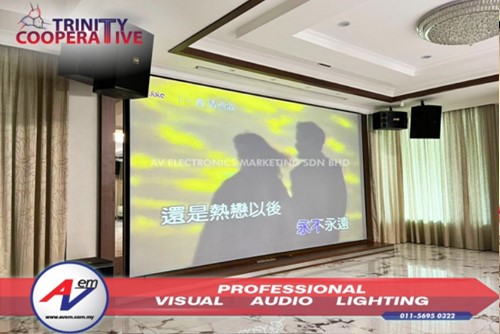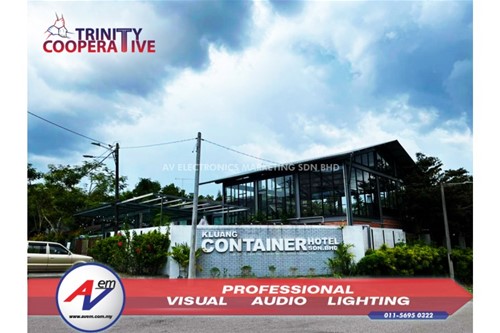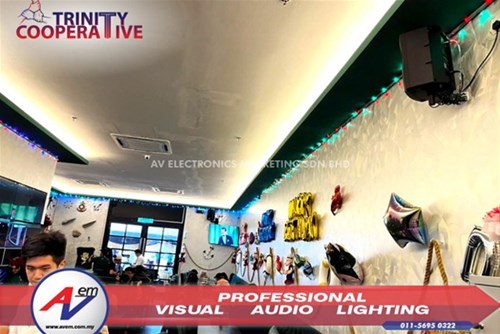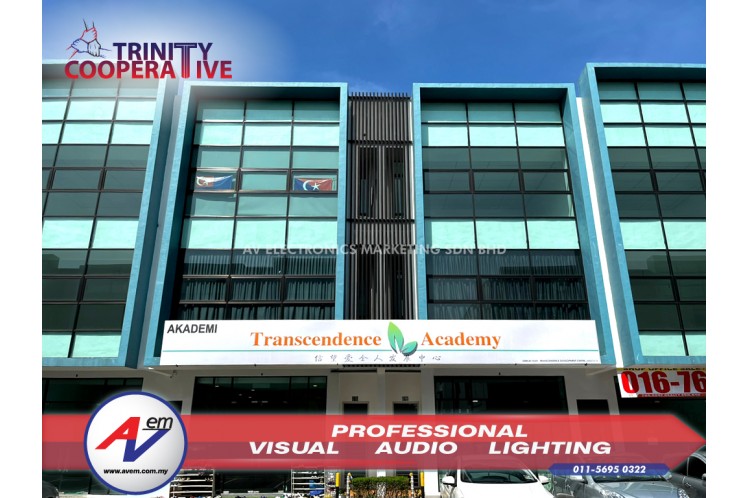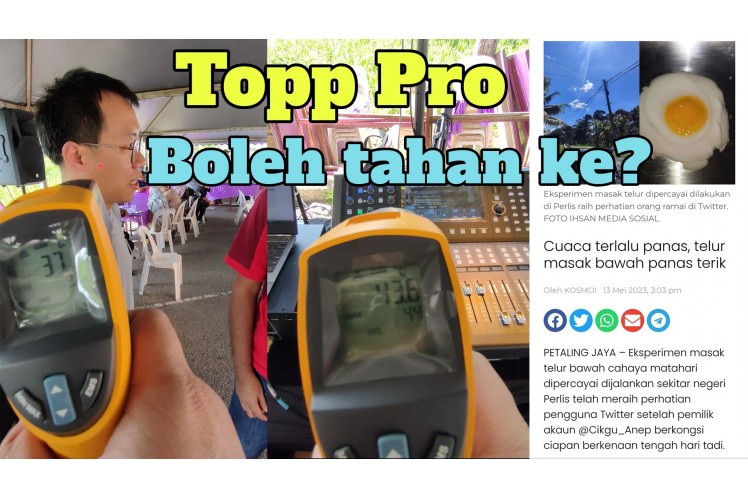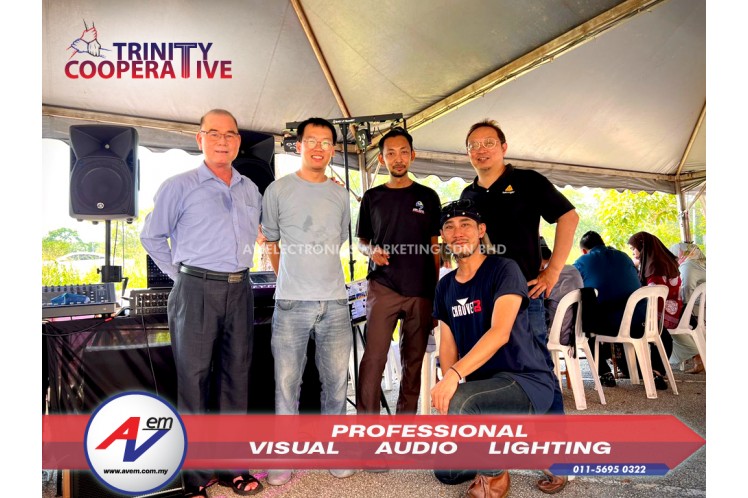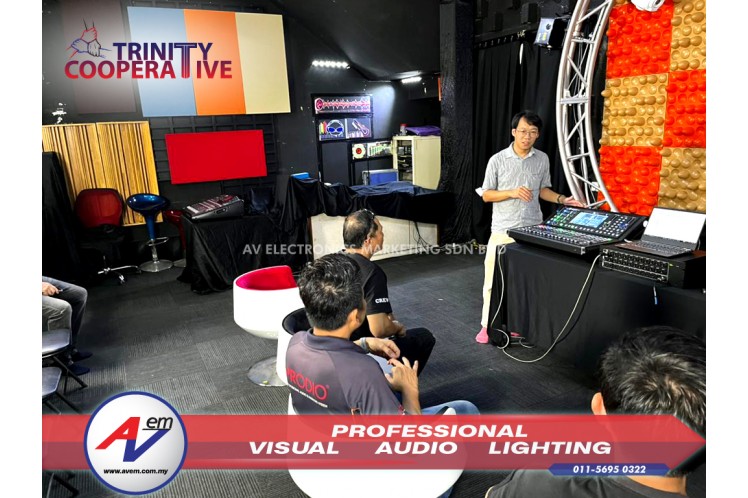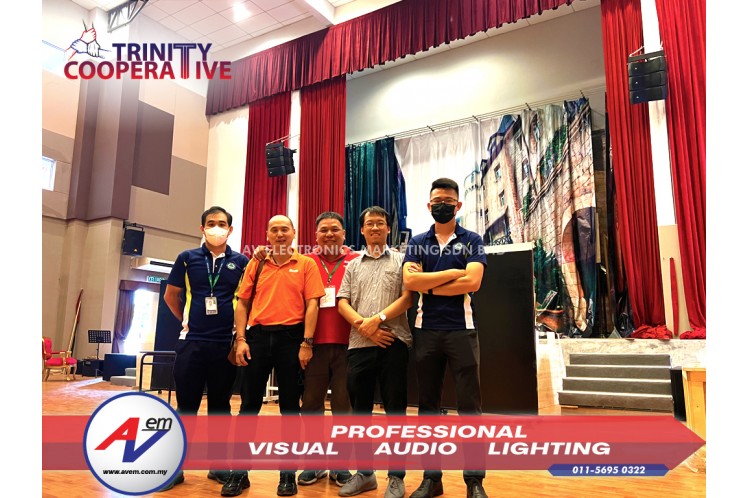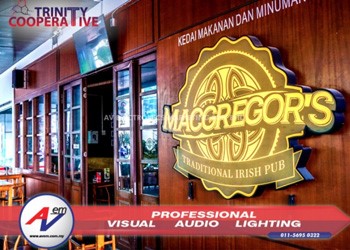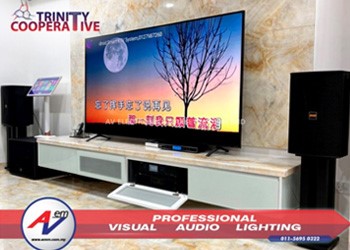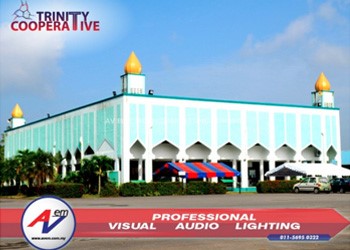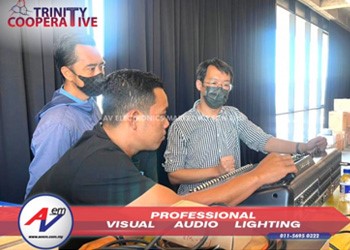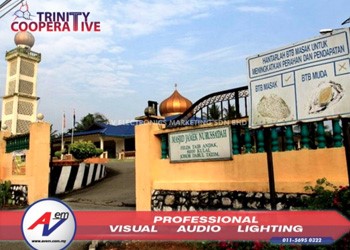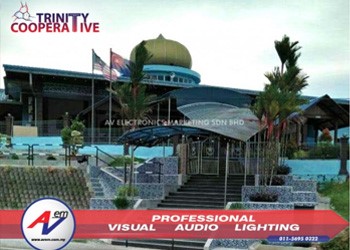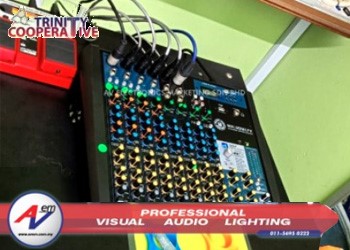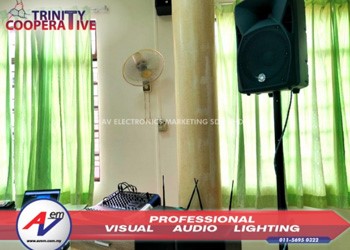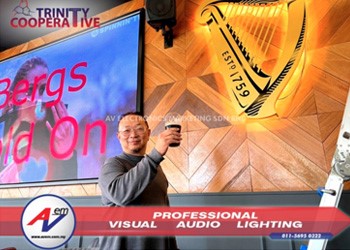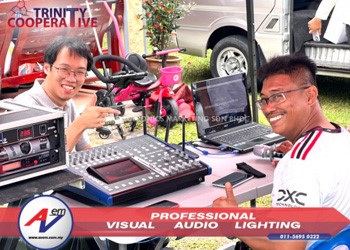Sarawak Stadium Upgrades its audio system to Audiocenter
audiocenter, stadium,Written by Eric Chee
Sarawak Stadium was built for the 1997 FIFA World Youth Championship. It is the home to Sarawak Football Club (Sarawak FA), a Malaysian Super League football team. With the capacity of 40,000 spectators, it has notable matches in the past such as Quarter Final match between Brazil and Argentina during 1997 FIFA World Youth Championship, the Charity Shield between Sarawak FA and Selangor FA, quarter-final match of 1998-99 Asian Cup Winners’ Cup between Sarawak FA and Kashima Antlers of Japan and fourth venue to host matches of Malaysia, Chelsea, Bayern Munich and PSV Eindhoven for the Champions Youth Cup 2007.



In 2016, Sarawak Stadium host SUKMA, a Malaysian sporting event held once every two years. This is the second time Sarawak to host such prestigious event since 1900. The facilities have been never upgraded since. To make SUKMA successful, facilities need to be upgraded with the latest technology. Sound reinforcement system is the top priority list for the organizer. It is the main communication system between the event organizers to the spectators and every performers and athletes on field. A good sounding, high quality audio and durable system is a necessity for the stadium with requirement of 90 dB evenly across the front-to-back seats. The variance of the dB must not exceed +/- 3 dB with extra 10 dB headroom and frequency response must be linear.


AV Electronics Marketing (AVEM) having successfully installed Audiocenter system in Stadium Shah Alam in the past and took the previous inspiration and proposed an improved Audiocenter configuration design to the local contactor, Kejuruteraan Daya Maju (KDM). AVEM with the help from Audiocenter’s Systems Engineer, Roshan Malim, did the system design and Ease simulation. Main challenge of designing for a stadium is that it was not built to be PA friendly venue. It was built in 1995 with simple PA system in mind. There was no consideration of proper rigging point for future expansion at that time.


In designing a venue, speaker position is one of the most crucial criteria for a good sound. This was the biggest challenge the system designers faced due to unavailability of installation point at the position they found that will provide the best performance. Furthermore, future maintenance is one of the considerations in mind. A hanged cluster of array at the top of the stadium will make any maintenance work extremely difficult. Using crane for maintenance work is out of the question as the heavy machinery will damage the floor of the stadium. To ensure the clusters is accessible for maintenance crews, the clusters are installed directly below to the catwalk. Each cluster point also come with a fix hooking point. It is for the purpose of chain hoist usage for lowering down or flying up the cluster. Maintenance work in midair is dangerous and this method enables a safer environment for the crew to solve anything from the ground.




Once the position is determined, 6 units V-HLA12+ MKII are hanged in a cluster. Total of 8 clusters of array are flied to provide coverage of the audience. Another 4 clusters of array is facing the side audiences. Due to unavailability of mounting area at the side, the side clusters are position at the edge of the main audiences area with the panning aimed at the side. Not forgetting the athletes on the field, 4 clusters of array is facing the field. V-HLA12+ MKII is a passive Bi-amp system with 1 X 12”Customized Woofer from Faital Pro, 1 X 2.84” Customized Compression driver from BEYMA, 135dB max SPL, 2800 Watts Peak - 700 Watts RMS and 54 Hz – 20 kHz Frequency Response, a 90-degree Symmetric directivity output together with a smooth tonal response free of any secondary lobes.






 A total 16 units of 2 x 380W DA2.2 and 16 units of 2 x 1200W DA12.2 are used to power up a total of 96 V-HLA12+ MKII cabinets. The DA2.2 is used for the HF while DA12.2 is used for MF. High amplifier damping factor of >2000 is the reason chosen to match Audiocenter’s flagship V-HLA12+ MKII system. Requirements specified in the competitive tender were a direct SPL of 90 +/- 3 dB on 99% of the audience seats; Audiocenter technicians report the system as having a highest SPL of 108dB, with uniform distribution on all seats.
A total 16 units of 2 x 380W DA2.2 and 16 units of 2 x 1200W DA12.2 are used to power up a total of 96 V-HLA12+ MKII cabinets. The DA2.2 is used for the HF while DA12.2 is used for MF. High amplifier damping factor of >2000 is the reason chosen to match Audiocenter’s flagship V-HLA12+ MKII system. Requirements specified in the competitive tender were a direct SPL of 90 +/- 3 dB on 99% of the audience seats; Audiocenter technicians report the system as having a highest SPL of 108dB, with uniform distribution on all seats.




Rainforest is just stone throw away, Sarawak River is within walking distance, the sea is approximate 30 km away, high air humidity, temperate weather, frequent rainfall are making the venue one of the most challenging environment for any system. Each wooden cabinet and Beyma driver are specially treated to withstand the harsh environment and special attention to the rust-proof treatment for the flybar. The system is built to last and ready take up any challenges threw by Mother Nature.


Delay due to long cabling and difference in cluster position are easily solved with delay time. Signal latency and signal drop are reduced to minimum by using fiber optic transmission. From the main audience side to the opposite audience side, the deployed fiber optic is approximate 650meters in length. In contrast, a standard 12 AWG loudspeaker cable has a 5.32 dB loss for 650 meter which means the decision to use fiber optic in between has helps the project team to solve a major hurdle. Each cluster is managed with a DSP processor, making the system an extremely high DSP processing in term of horsepower. Digital speaker management is the soul of the system, and 40bit floating point resolution, 24bit AD/DA and 100dB dynamic range Proel PC-260 is employed to get the job done. Reverberation and echo are reduced to minimum by tweaking the audio signal. With extremely powerful SMAART 7.5 and highly skilled and certified SMAART Engineer, Roshan Malim able to remove the annoying frequencies and re-align the whole audio spectrum tailors to the venue. The system is expected to perform even better when the full crowds presence during SUKMA 2016 which will officially open in 22nd July 2016.





Click to access to the brand's page installed in this project


Would you like to learn how much this kind of project cost? Click HERE
- active loudspeaker
- active speaker
- active subwoofer
- alto
- analog crossover
- analog equalizer
- analog mixer
- audiocenter
- b205d
- behringer
- bmb
- bosch
- box speaker
- church
- column speaker system
- convention center
- csp-610
- csp612
- css1720
- csw-115
- da2250
- da2500
- dad-500
- dad950
- dar-350h
- dcx2496le
- digital loudspeaker management
- digital mixer
- digital snak2
- digital snake
- dl16
- dlm408plus
- dm220
- dm24.8
- dm-24.8
- dm48.20
- dpe-2.10
- dpm4.13mk2
- dsp5211
- dsppa
- dsspa
- dvs-4t
- ea5118
- education
- emix
- emma-120b
- emma-835zsmkll
- empa-8250mkii
- empa-8500
- empa-8500 mkii
- empa-8500mkll
- emws884
- emws884b
- emws-884w
- ep1500
- ep2000
- ep512
- fbq-1502
- fbq-1502hd
- fbq3102hd
- hm1461fx
- hm822fx
- ic electronics
- iq15
- iq18b
- iva
- iva audio pack
- karaoke
- kfc
- kla210
- kla210dsp
- kla210wp
- kla218
- kla218dsp
- kla28
- kla815b
- klark teknik
- km1700
- l65
- l65+l65a
- l65+l65s
- l65a
- lbb-3200/00
- lbc-3200/00
- lbc-3210/00
- line array
- live music venue
- live-8
- loudspeaker
- lt10a
- lt12p
- m18b
- m32
- m32 live
- m7.0mkii
- m-7.0mkii
- ma12
- ma15
- masjid
- microphone
- microphones
- midas
- mixer
- mixing amplifier
- mr-28u
- multipurpose hall
- mxi.1222cfx
- mxi.1422
- mxi.1422cfx
- mxi.1622cfx
- my boss club
- pa sistem untuk masjid
- pa system for auditorium
- pa system for bar
- pa system for cafe
- pa system for church
- pa system for court
- pa system for goverment
- pa system for hall
- pa system for hotel
- pa system for mosque
- pa system for multipurpose hall
- pa system for restaurant
- pa system for school
- pa system for temple
- pa system for worship
- passive loudspeaker
- passive subwoofer
- pc260
- pf-118b+wp
- pf-12+wp
- pf-15+wp
- pm827
- pm8270
- pm-8270
- power amplifier
- power mixer
- powered mixer
- pro-12.0
- pro256dx
- pro26dx
- pro7.0
- pro-9.0
- proel
- pro-ud2
- ps15r2
- qx602mp3
- rx10mk2
- rx-10mk2
- rx12mk2
- rx-12mk2
- rx15mk2
- rx-15mk2
- rx-5mk2
- s16
- s32
- sa3118
- sa312
- sa315
- shure
- smaart tuning
- stadium
- stage monitor
- sub118b
- sub-118b
- subwoofer
- t2208
- tannoy
- test test
- tfx122m-an
- th20/tu60ml
- topp pro
- tpm2.3
- tpm-2.3
- tpx-122m
- turbosound
- u2004ch4
- uum
- ux34d
- v4fx
- ve-20
- vp1220
- wd12av2
- wd15av2
- weather proof loudspeaker
- wing
- wireless microphone
- ws740
- x10
- x10a
- x12a
- x15
- x15a
- x1622usb
- x1832usb
- x32
- x32 compact
- x32 producer
- x8
- x8a
- xenyx x1204usb
- xenyx x2442usb
- xr18
